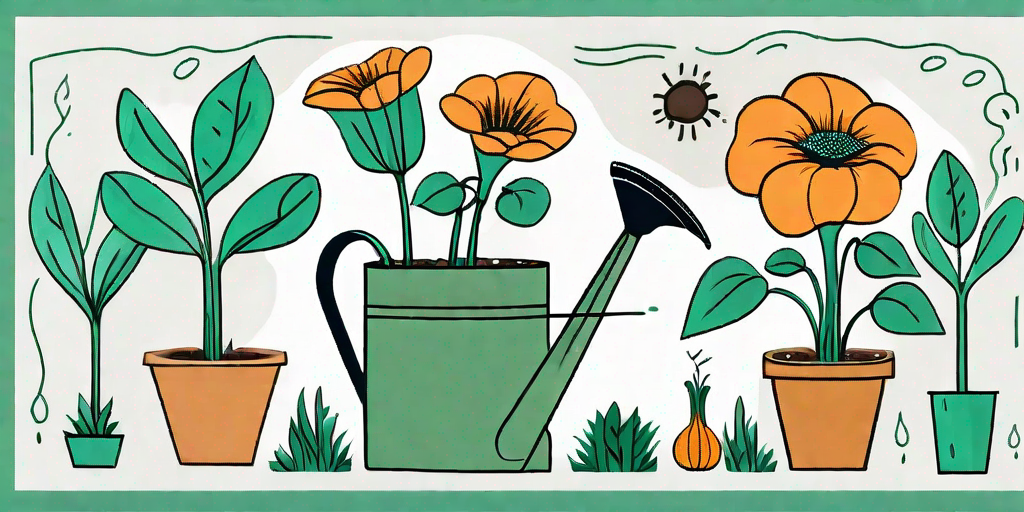
Welcome to the world of gardening, where the dirt is your canvas and the plants are your paint. Today, we're going to talk about a vegetable that's as fun to grow as it is to say: squash! Whether you're a seasoned gardener looking to expand your repertoire or a green-thumbed newbie ready to get your hands dirty, this guide will help you squash your gardening goals.
Understanding the Squash Family
Before we dive into the dirt, let's take a moment to understand what we're dealing with. Squash belongs to the Cucurbitaceae family, which also includes cucumbers, melons, and pumpkins. They're divided into two main categories: summer squash and winter squash.
Summer squash, like zucchini and yellow squash, have a soft skin that's edible. They're harvested in the summer before they fully mature. Winter squash, on the other hand, are harvested in the fall when they're fully matured. They have a hard skin that's usually not eaten, but the inside is sweet and delicious. Examples include butternut, acorn, and spaghetti squash.
Summer Squash
Summer squash are the life of the garden party. They grow quickly and are ready to harvest within 60 days. They're also prolific producers, so be prepared to have plenty of squash to share with friends, family, and maybe even your entire neighborhood.
Popular varieties of summer squash include zucchini, yellow squash, and pattypan squash. They're best eaten fresh and can be used in a variety of dishes, from stir-fries to bread.
Winter Squash
Winter squash are the marathon runners of the squash world. They take longer to mature - anywhere from 80 to 100 days - but their hard skin allows them to be stored for months, providing a source of fresh vegetables in the winter.
There's a wide variety of winter squash to choose from, including butternut, acorn, spaghetti, and pumpkin. They're typically used in soups, roasted, or used in baking.
How to Plant Squash
Now that you're familiar with the squash family, let's get down to the nitty-gritty: planting. Squash are sun-loving plants that thrive in warm soil, so it's best to plant them in late spring or early summer.
Here's a step-by-step guide to planting squash:
- Choose a sunny spot in your garden. Squash need at least six hours of sunlight each day.
- Prepare the soil. Squash prefer well-draining soil rich in organic matter. Add compost or well-rotted manure to improve soil fertility.
- Plant the seeds. Sow two to three seeds about an inch deep and about three feet apart. Squash plants need plenty of space to grow.
- Water well. Keep the soil consistently moist, but avoid watering the leaves to prevent disease.
- Wait and watch. Germination should occur within a week or two.
Maintaining Your Squash Plants
Once your squash plants are up and running, they'll need some care to keep them happy and productive. Here's what you need to know:
Watering is key. Squash plants are thirsty and need consistent watering. However, it's important to water at the base of the plant to avoid wetting the leaves, which can lead to disease.
Feed your plants. Squash are heavy feeders, so they'll appreciate a side dressing of compost or a balanced organic fertilizer every few weeks.
Watch out for pests and diseases. Squash are susceptible to a number of pests, including squash bugs and vine borers, as well as diseases like powdery mildew. Regularly check your plants and take action at the first sign of trouble.
Harvesting and Storing Squash
The moment of truth: harvesting. For summer squash, harvest when they're small and tender, usually when they're about six to eight inches long. Winter squash should be harvested when the skin is hard and the squash sounds hollow when you tap it.
Store summer squash in the refrigerator and use within a week. Winter squash can be stored in a cool, dry place for several months.
Frequently Asked Questions
Can I grow squash in containers?
Yes, you can! Choose a large container and a compact variety of squash for best results.
Why are my squash plants wilting?
Wilting can be a sign of inadequate watering, but it can also be a symptom of squash vine borer damage. Check the base of your plants for any signs of these pests.
Why aren't my squash plants producing fruit?
This could be due to a lack of pollination. Try attracting bees to your garden, or hand-pollinate by transferring pollen from the male flowers to the female flowers with a small brush.
So there you have it, folks! With this guide, you're well on your way to squashing your gardening goals. Now go forth and plant!











